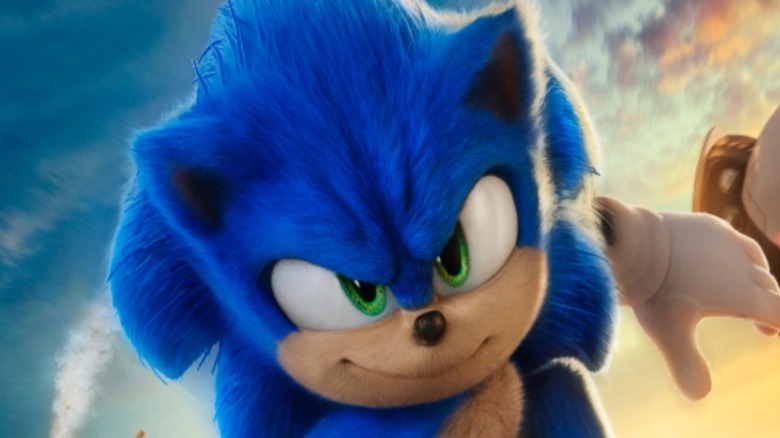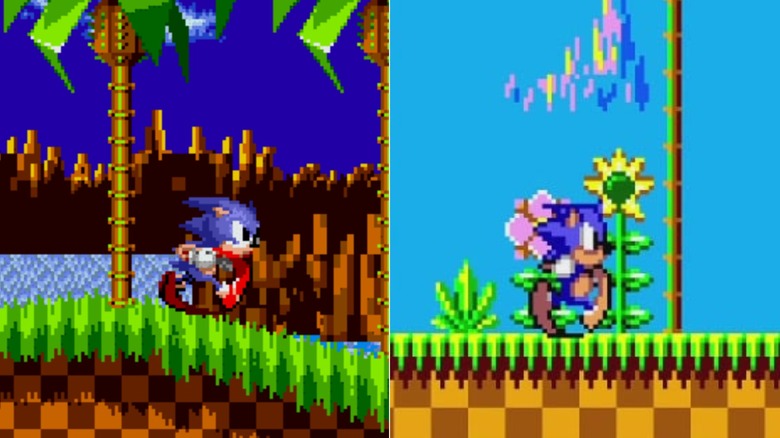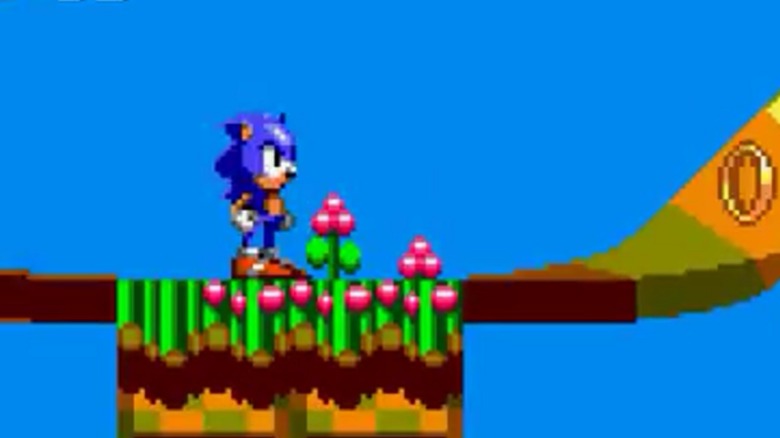It Took Some Clever Sacrifices For Sega To Get Sonic On The Master System
The original "Sonic the Hedgehog" was released back in 1991 for the Sega Genesis. The character quickly became immensely popular, cementing the spiky blue speedster as Sega's mascot and driving Team Sonic to quickly put out two sequels that were also incredibly well received. "Sonic" had the best-selling game on the Gensis and arguably became a driving force in why many people chose to buy the Genesis over Nintendo's SNES. In fact, the "Sonic" franchise was so popular that Sega decided to make alternate 8-bit variations of "Sonic the Hedgehog," and "Sonic the Hedgehog 2" as well as another title called "Sonic Chaos." These were all made in order to operate on the handheld Sega Game Gear and the older Sega Master System's significantly less powerful hardware.
This presented a problem, however. The Genesis was a big step forward for Sega. It had 16-bit graphics, which meant more detail and more color as well as a faster processor and a better sound card. This was great for people who owned the newer console, but it also meant that these alternative versions of the games had to undergo some creative downgrades in order to be able to run on the Master System.
Keeping the spirit the same
YouTuber and professional animator Daniel Floyd of New Frame Plus made a video where he went through every home-console "Sonic" platformer with the intent of examining the evolution of the in-game animation. He praised the first game for Sonic's expressive nature, pointing to the way he is visibly reacting to a number of different situations, such as the surprise when he falls or his impatience if he is left idle too long. Floyd also pointed out how there were several stages to Sonic's run and that the player would have to factor in both his speed and the angle of incline of the terrain when navigating the various levels, arguing that the animation actually helped players learn to control Sonic more easily.
Floyd then compared this to the version of the game that was released on the Master System. The backgrounds for this retro-grade "Sonic the Hedgehog" seem flatter and lack a lot of the dimension and complexity that can be seen in the Genesis version – as does Sonic himself. This is largely due to the Master System's smaller color pallet and less powerful graphics hardware. Floyd also mentioned that the developers had to cut the sloped terrain that rotated, as well as the animations for ledge teetering and block-pushing, but he went on to exclaim how impressed he was with how much the team was able to keep in the game. "Almost everything that worked in the 16-bit original still works here," he stated.
Improving the sequels
It might seem like the first "Sonic the Hedgehog" on the Master System would have been a showcase of the most that the console could handle. It was already a downgrade from a game that was beyond its capabilities, after all. It turns out that wasn't the case, though. Floyd points out that the 8-bit version of "Sonic the Hedgehog 2" has a new animation for when Sonic is bored in which he shrugs his hands rather than tapping his foot, and that Sega finally added some rotated run-cycles and Sonic's animation for when he is teetering on a ledge. Obviously, this still doesn't touch all of the new features that were available in the Genesis version of "Sonic the Hedgehog 2," but these new features serve to give Sonic more personality, which in turn makes controlling him more engaging.
Then there's the third game for the Master System, "Sonic Chaos." This was a stand-alone title that doesn't have a comparable version on the Genesis, but Floyd also talked about how this game managed to improve the dimensions of Sonic's sprite, smoothed out several of the more awkward features from "Sonic 2," and added Tails as a playable character.
It's certainly impressive that the developers managed to get so much performance out of the older 8-bit hardware. Even if the Genesis versions of the games are the ones that received the most acclaim, it's undeniable that the developers did all that they could to give Master System gamers the best "Sonic" game they could.



